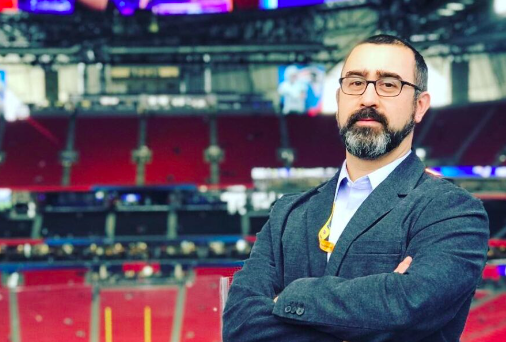How I Got Here: FBI’s Michael Johnson on seizing every opportunity to learn new things
Michael Johnson shares the driving force behind impactful storytelling.

Michael Johnson, section chief for strategic communications in the FBI Office of Public Affairs, oversees the development of OPA’s strategic communication strategies, manages the bureau’s public online presence, handles speechwriting for the director and senior FBI executives, and internal employee communications.
Johnson most recently served as the division chief of digital engagement in the Office of Public Affairs at U.S. Immigration and Customs Enforcement (ICE). Before becoming a full-time federal employee, he joined ICE in October 2005 as a contract multimedia production specialist.
My first comms profession was:
Right out of college. A few weeks before graduating from the University of Maryland, College Park with a degree in broadcast journalism, I was hired by Medill News Service to be a photojournalist and video editor. That led to a year working in news bureaus around D.C. These were the days of big, shoulder-mounted cameras and actual videotape. I eventually followed my love of video production away from the news, but those days slamming together a package to make a satellite hit instilled a sense of urgency in how I approach work and allowed me to look at a story and cut right to the heart of the message.
The moment I’m proudest of in my entire career is when I:
Was selected for my current position with the FBI. My journey with the federal government began almost out of necessity. The video production industry was going through some significant changes in the early 2000s and the boutique post-production house I was working for let me go. I was bartending to keep busy as I looked for a new job when a mentor was contracted to create a video unit for U.S. Customs and Border Protection at the newly created Department of Homeland Security (DHS). She brought me on as a producer and set me on my path for the next 20 years.
As I realized the opportunities that were available to me in the federal government, both as an employee and a storyteller, I was determined to be a full-time federal employee. After seven years as a contractor, I was hired into my first federal position with U.S. Immigration and Customs Enforcement, also part of DHS. Over the next 15 years, I developed my skillset as a communicator and a leader, taking advantage of any opportunity to learn new things. While joining the Senior Executive Service, the federal government’s corps of executive management, was on my long-term roadmap, I didn’t anticipate pursuing that for another five years or so. However, the description for my new role with the FBI was such a perfect match that I couldn’t pass up the opportunity. I mean, this is the FBI! The moment I got the call saying I’d been selected instantly became a core memory for me.
One thing that worries me about the future of my profession is:
The attention span of the audience. I’m sure the generation before me worried about what MTV was doing to our attention spans, so maybe this is only pearl clutching on my part. But as the content we consume on YouTube and social media becomes more condensed and edited within a frame of its life, the ability to sit and read a long-form articles, listen to a meaty speech or podcast, or settle in for a longform video seems to be an increasingly rare skill. When all you have is a few hundred characters or 30 seconds of video, how can you tell the deeper story? You can give the bullet points and the headlines, but I want more. But that’s our challenge, isn’t it? To meet the audience with our message, presented in a way they want.
A tool or a piece of software I cannot live without is:
OmniFocus! It is a task management app that’s been around from the early days of the iPhone. I’ll use it for jotting down quick tasks I need to stay on top of, but it is also ideal for larger projects that need to be broken down into steps. It is location and context aware, so it only shows me work tasks when I’m at the office or reminds me that I have items on my grocery list when I’m near a grocery store. And most importantly, if I don’t want to deal with a particularly nagging task, I can snooze it to deal with later. When used in combination with Drafts, a text-entry app, I’m able to quickly get a task or reminder into my phone.
One way I stay creative and motivated is:
Listening to music. I have music playing almost all the time when I’m working. Prog, metal, punk, alt-country, metal, classical, electronic, jazz; you name it. Sometimes the music will help me get into my flow state, other times I just let it take my mind away from a problem for a few minutes or get my energy back up. Either way, I’ve always relied on music to get me through life. For anyone wondering: Pink Floyd, Rush, The Beatles, Ron Pope, Dream Theater, R.E.M., Taylor Swift, Low, Anathema, David Bowie, Radiohead. The list goes on and on.
One piece of advice I would give other people in my profession is:
Stay curious. As marketers and communicators, we are storytellers. Whether that means telling the story of a person, a government agency, or a product, it is our job to figure out how to tell the audience what we need them to know in a way that they want to hear it. When we lose that sense of curiosity, that desire to find a good story, we lose the spark that allows our work to resonate with an audience.
Isis Simpson-Mersha is a conference producer/ reporter for Ragan. Follow her on LinkedIn.







